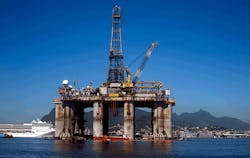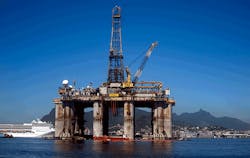The article contained a link to the federal regulators’ incident investigation and I read that document, cringing at the circumstances and behaviors that led up to the explosion and fire that killed workers who had no idea when they woke up that morning that they were going to die that day.
This blog post stems from my reading of that report and describes some of the most significant factors that contributed to the loss of life, injury, environmental impact and physical plant damage that resulted from the explosion and fire.
This tragedy strikes close to home for me. Thirty plus years ago, no more than 10 miles from where the explosion occurred and on my very first offshore project, hot work operations were being conducted in close proximity to an atmospheric pressure-rated slop oil tank. Vapors from that tank ignited, a resounding “whoompff” reverberated across the production deck, the crew scattered and … no one was hurt, no hydrocarbons spilled and there was no property damage. The openings in the top of the tank coupled with the combustible/oxygen concentration were such that there was no explosion.
I was an ignorant project engineer and my crew and I were lucky that day. Taking chances is not a good way to ensure longevity in the oil field.
The quote: “It is easy to be wise after the event” is attributed to Arthur Conan Doyle and is evident every time there’s an incident in the workplace and we start looking at causal factors. Some of these factors include:
- Poor co-ordination of and communication between multiple contractors;
- Inadequate safety orientation for new workers;
- No owner company representative on the platform;
Looking back on any incident, most of us can clearly identify the circumstances and behaviors that resulted in people getting hurt. These include language barrier issues, failure to ensure hot work areas are isolated from hydrocarbons and non-functioning or non-existent gas detectors. Other failures include:
- Areas that are not inspected prior to hot work;
- Daily hot work permits that are copied from previous days permits; and
- Delegating the Issueance of hot work permits to an inexperienced contractor.
Sometimes there are deeper, underlying incident causal factors without obvious short-term remedy. These often are related to the corporate safety culture. For example, it’s a cultural issue if workers are worried about losing their jobs because they voiced safety concerns or “stopped the job.” It also is a cultural issue if there is a lack of resolution of safety issues brought up by work crews and tight work schedules that do not allow time to resolve safety issues or that require workers to work extended shifts or work faster than is safe.
In any event, there ALWAYS will be a path to getting work done that identifies and mitigates hazards and behaviors that hurt people in the work place.
If I were ever to have a quote related to wisdom attributed to me I’d like it to be: “Be wise from looking forward, not back.”
About the Author
Brent Senette
Brent Senette has worked in the oil and gas industry in a variety of engineering and management positions for the past 35 years. He is an engineer, a certified project manager and a relentless advocate for and practitioner of the principles of process and personal safety leadership.

